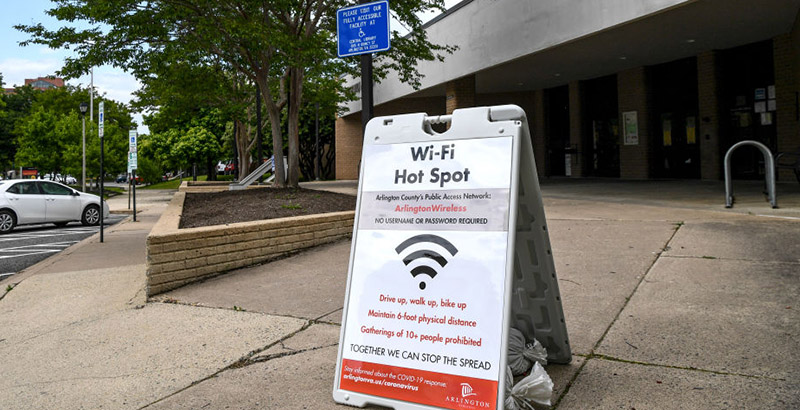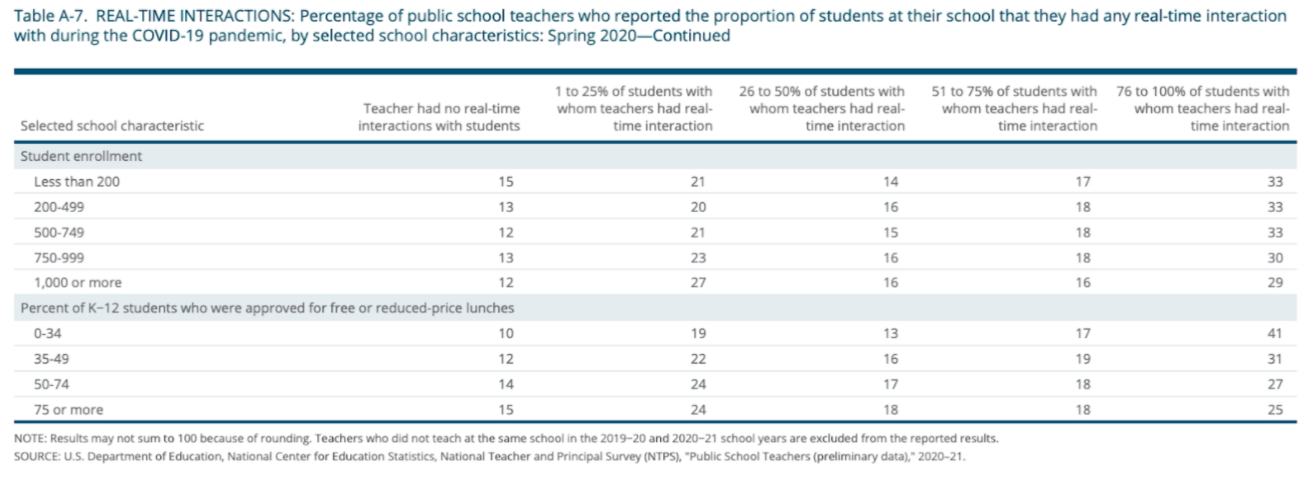NCES Survey Shows Private School Students Had Far Better Internet and Greater Teacher Access During Early Pandemic

Get stories like this delivered straight to your inbox. Sign up for The 74 Newsletter
Private school students were almost twice as likely as their public school counterparts to have real-time contact with their teachers during the early months of the pandemic, an advantage that could be attributed to their far better access to home internet, according to new federal research.
The report, released today by the National Center for Education Statistics, compiles data collected from the 2020-21 National Teacher and Principal Survey. Conducted annually as a series of questionnaires, the survey offers a comprehensive review of schooling in America. Some 76,000 teachers and nearly 13,000 principals were included in the sample for the “first-look” study on teaching and learning conditions during the tumultuous spring of 2020.
The report’s most striking findings highlight the gap in home internet connectivity between students enrolled in different kinds of schools. While 58 percent of private school principals reported that all of their students had access to the internet at home during this period, only 4 percent of public school principals could say the same.
The flipside of that disparity was no less stark: At the same moment that schools were closing and classes migrating to Zoom and other online platforms, 61 percent of public school principals said they’d sent wireless hotspots home with students, compared with just 9 percent of private school principals.
In a statement accompanying the release, NCES Commissioner Peggy Carr commended the “extraordinary efforts” of school leaders to bring virtual learning opportunities to their students.
“Many principals sent hotspots and other devices to students’ homes, worked directly with internet providers, or offered spaces where students could safely access free Wi-Fi so that students had the opportunity to learn in this unprecedented time,” Carr said.

But in spite of the massive effort expended to ease the switch to online learning, the technological divide seems to have been reflected in the early weeks of COVID-era instruction. Although a slightly larger percentage of public school faculty told pollsters that their schools had transitioned to distance-learning formats (77 percent, vs. 73 percent of private school teachers), they were only about half as likely — 32 percent vs. 61 percent — to report having real-time interactions with over three-quarters of their students in the spring of 2020.
While 9 percent of private school teachers said they had no such interactions during that time, 13 percent of public school teachers did.
Geographic distinctions were also clear in the data. Among public school teachers, those employed in urban and suburban areas were comparatively more likely (86 percent and 87 percent, respectively) to say that all or some of their classes had moved online that spring than those teaching in towns or rural areas (75 percent and 77 percent, respectively).
While about half of city and suburban principals said they’d worked with internet providers to offer more home internet access to families, just 42 percent of principals in towns and 36 percent of those in rural areas agreed.
Other key takeaways from the report:
- Private school teachers were also significantly more likely to agree, either “slightly” or “strongly,” that they had access to the resources necessary to be effective in their teaching (76 percent, vs. only 61 percent of public school teachers).
- More than twice as many private school teachers “strongly” agreed with that claim than public school teachers (37 percent vs. 17 percent).
- Interaction gaps were also apparent between teachers at charter schools vs. those at traditional public schools. In the first few months of the pandemic, 55 percent of charter school teachers said they taught real-time lessons to students who could participate through video or audio interaction; only 46 percent of district teachers said the same.
- Charter school teachers were also somewhat more likely to report holding scheduled sessions with groups of students, offering one-on-one sessions, and convening office hours than were district school faculty.
Get stories like these delivered straight to your inbox. Sign up for The 74 Newsletter

;)
